By Amy Hau
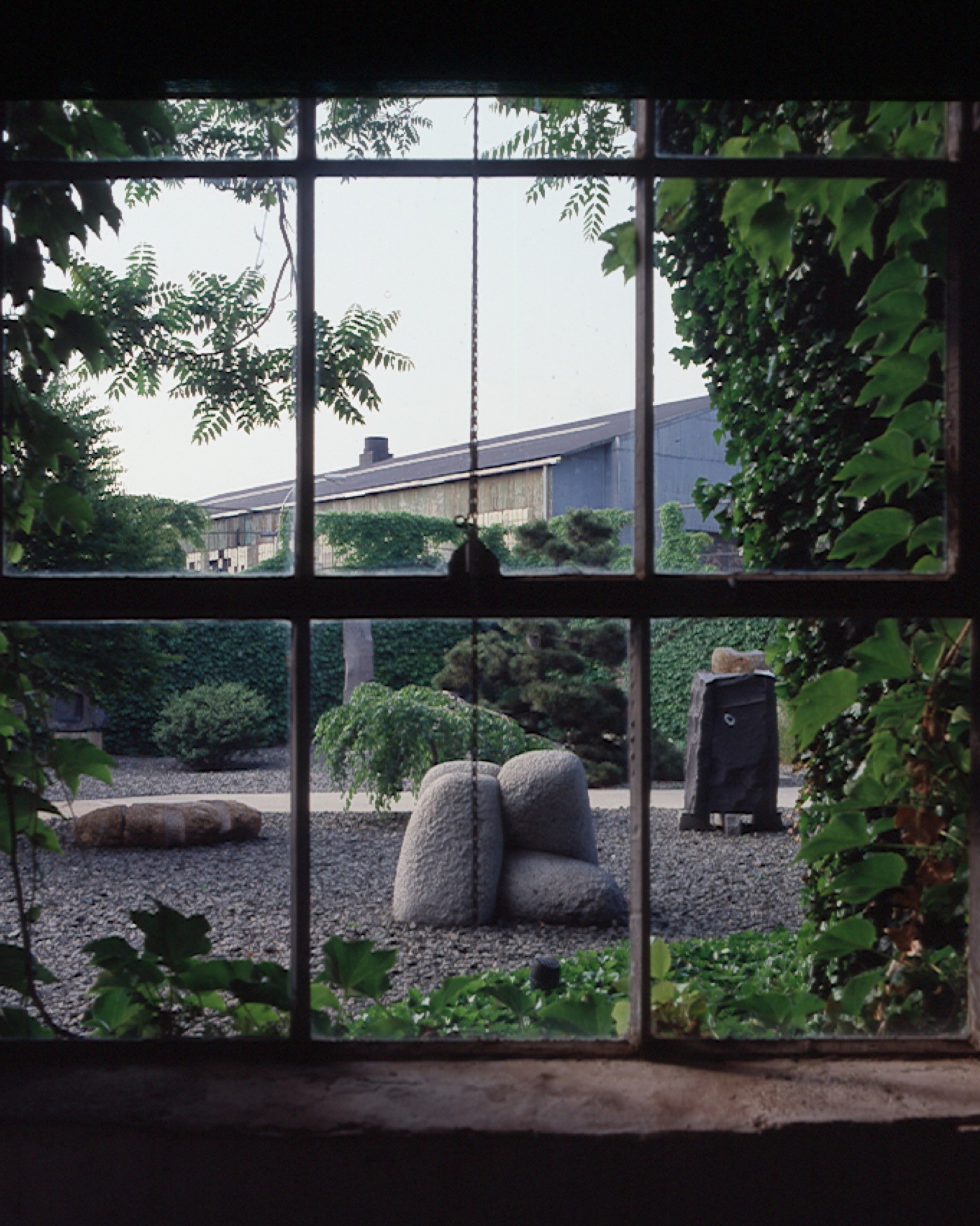
In 1961, Isamu Noguchi relocated from Manhattan to Long Island City, Queens, with the purchase of a single-story commercial building on the southwest corner of 10th Street and 33rd Road. Noguchi found the neighborhood, with its skilled artisan shops and suppliers of stones and metals, highly conducive to his studio practice. Unlike his former studio at 33 MacDougal Alley in Greenwich Village, the remote location offered the opportunity to maintain a monastic lifestyle with few visitors dropping in. The new studio, a 3,200-square-foot warehouse, gave him open areas in which to work on a large scale. With the help of carpenter Yukio Madokoro, he developed a loft bedroom and living spaces within the building. While he continued to travel extensively and establish other studios in Italy and Shikoku, Japan, it was in this building that Noguchi created and stored many of his artworks for over a decade.
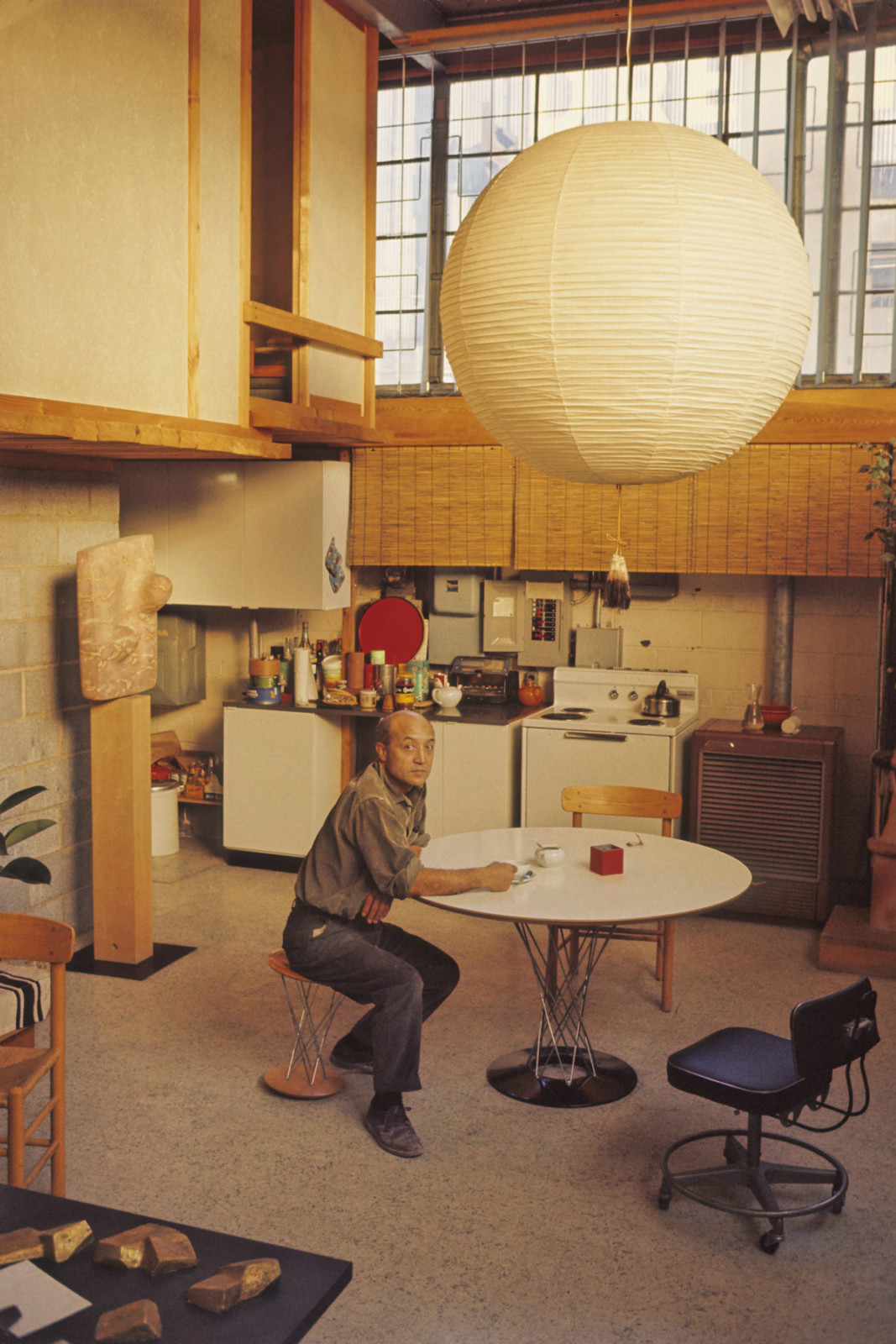
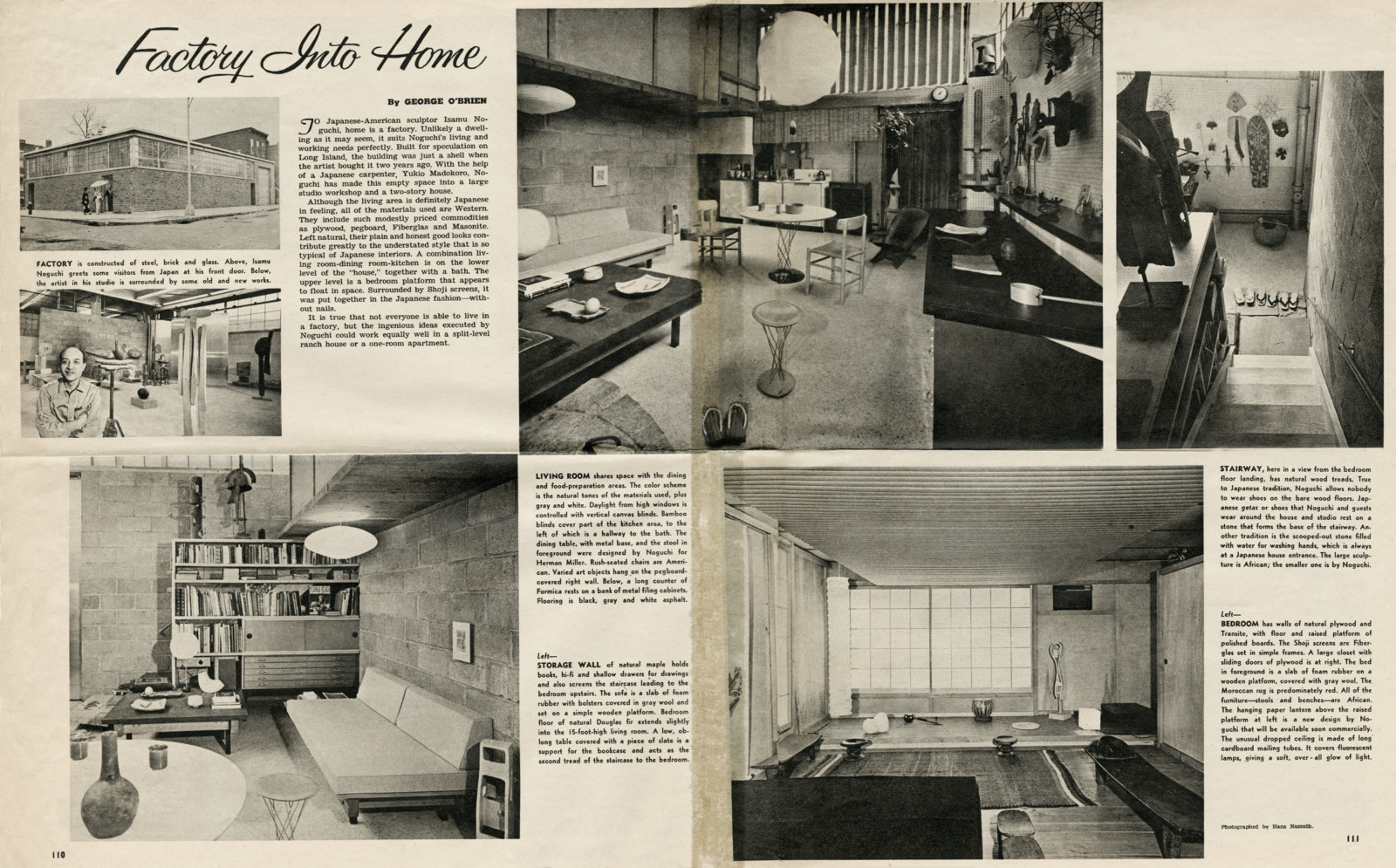
- Isamu Noguchi in his Long Island City studio, c. 1960s. Photo: Dan Budnik. ©INFGM / ARS
- George O’Brien, “Factory into Home,” New York Times Magazine, April 8, 1962.
By 1974, the prolific artist needed more space, and the red brick building across the street on Vernon Boulevard—which would eventually become The Noguchi Museum—was up for sale. The structure, dating from 1929, was first occupied by the Demgen & Balletto Co., which in 1933 became the Astoria Photo Engravers Supply Company.





Although it is not certain exactly when the photoengraving supply business closed, the property had been offered for rent by the mid-1960s, as evidenced by the set of 1960s images, which were most likely provided to Noguchi by a leasing agent. Noguchi purchased the 31,000-square-foot, two-story building and adjacent courtyard in May 1974 and began moving much of his work from the 10th Street studio to this space.
In 1980, by which time he had decided to create a museum, Noguchi also purchased the gas station on the southern end of the block. He razed it the following year, and with the help of his architectural partner, Shoji Sadao, Noguchi designed and constructed in its place the concrete-block building that now serves as both the entry pavilion and an indoor-outdoor gallery for Noguchi’s totemic basalt works. This concrete pavilion, the red brick building, and the sculpture garden make up the total footprint of this unusual triangular city block, as well as the entire museum.
Despite the derelict condition of the open courtyard of the red brick building when Noguchi bought it in 1974, he saw great potential for its transformation. Having already designed outdoor settings—most recently a large-scale public plaza project for Detroit (1972–79)—the idea of turning his courtyard in Queens into a sculpture garden for the display of his own artworks appealed to him. These photographs of the building date from the spring of 1974, most likely taken just before Noguchi purchased the property.







For Noguchi, the transformation of the courtyard into a sculpture garden meant bringing in an abundance of trees and plants. Inspired by his own designs for the UNESCO Garden of Peace in Paris and the Billy Rose Art Garden for the Israel Museum in Jerusalem, he was particularly sensitive to how his works would engage with nature. He invited Tim DuVal, formerly of Plant Specialists, a local Long Island City business, to help find unusual trees and plant specimens indigenous to the East Coast. Years later, during a tour of the garden in 2011, DuVal recalled how much Noguchi had liked a Japanese pine from Long Island that grew sideways after sustaining damaging hurricane winds; in the selection of trees and plants, texture and form were important characteristics to the artist.
Similarly, Noguchi appreciated the exposed steel and wood beams found in the interior spaces of the old factory and incorporated these into his design for the museum galleries.
He also retained the original metal ceiling with its patina in the room that is now the Noguchi Museum Shop and Cafe; not only did it appeal to Noguchi’s sculptural sensibilities, but also this vestige is testimony to the history of the building’s former use. In subsequent major capital renovations, these design intentions have been honored, and visitors today can still see the totality of Noguchi’s original design.

Following construction of the concrete-block building in 1982–83, the next task Noguchi faced was to install his latest body of work in the new space. For this purpose, he selected several large-scale basalt works from his studio in Mure, Japan, to be shipped to Long Island City. His half brother, Michio Noguchi, photographed the unpacking and installation of the works, as well as the finished garden.
With the help of Shoji Sadao, Masatoshi Izumi (Noguchi’s stone carver in Mure), studio assistants, and a crane, such big and heavy works as To Tallness (1981) and Behind Inner Seeking Shiva Dancing (1975–81) were off-loaded from a tractor-trailer over the perimeter fence and into the garden.
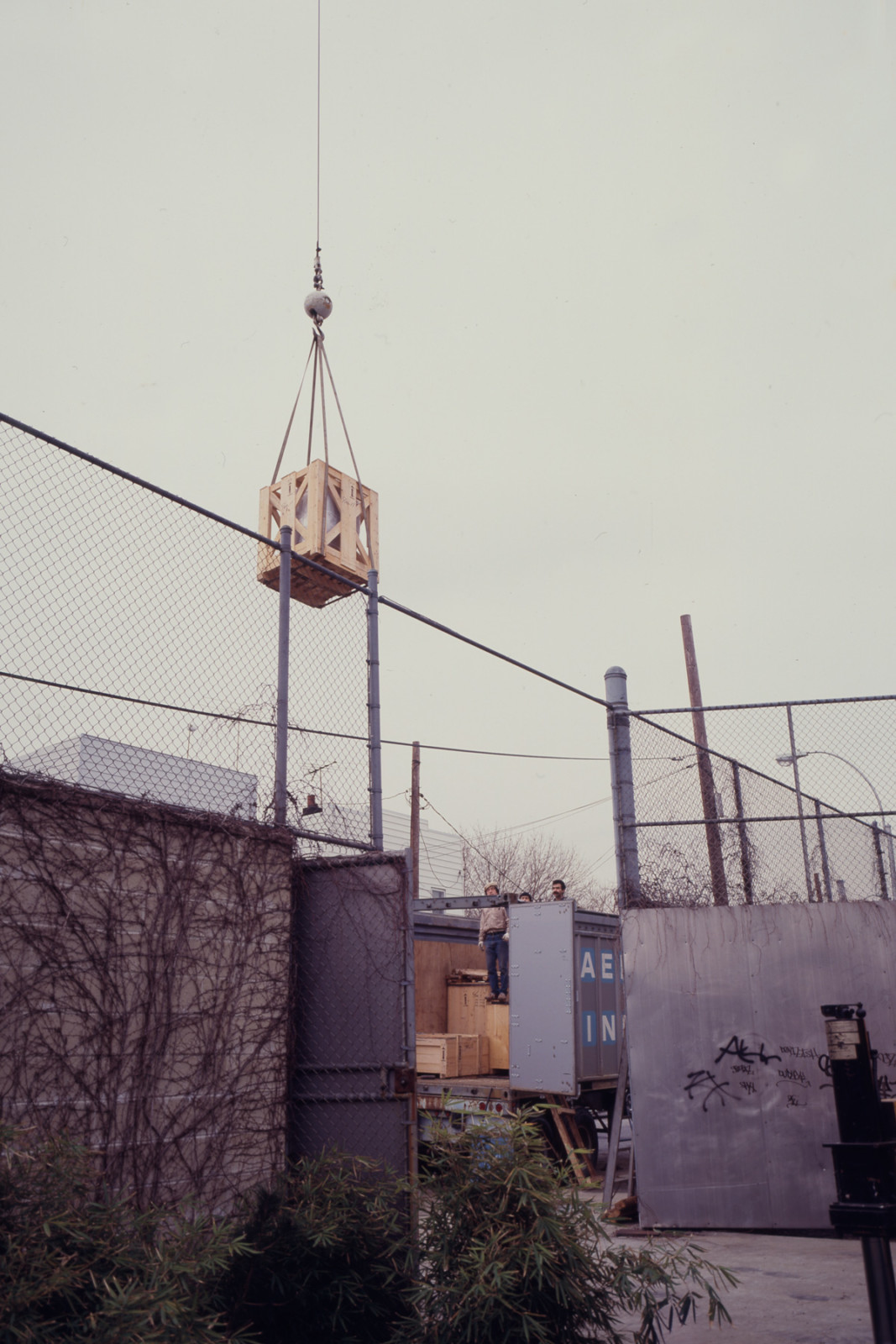




In 1985–86 Noguchi commissioned photographer Shigeo Anzai to document the galleries as they were installed. In a sense, Anzai’s photographs, like those of the garden taken by Michio Noguchi, serve as a time capsule. Comparing the images to the The Noguchi Museum today, one witnesses change over time. Today a visitor no longer sees the Manhattan skyline from the window in Area 10 but rather the tops of birch trees, which have grown to form a natural screen reminiscent of traditional Japanese design. Yet continuity is also apparent in the images, as in that of Area 9, where the installation today remains much the same as in Noguchi’s original plan.

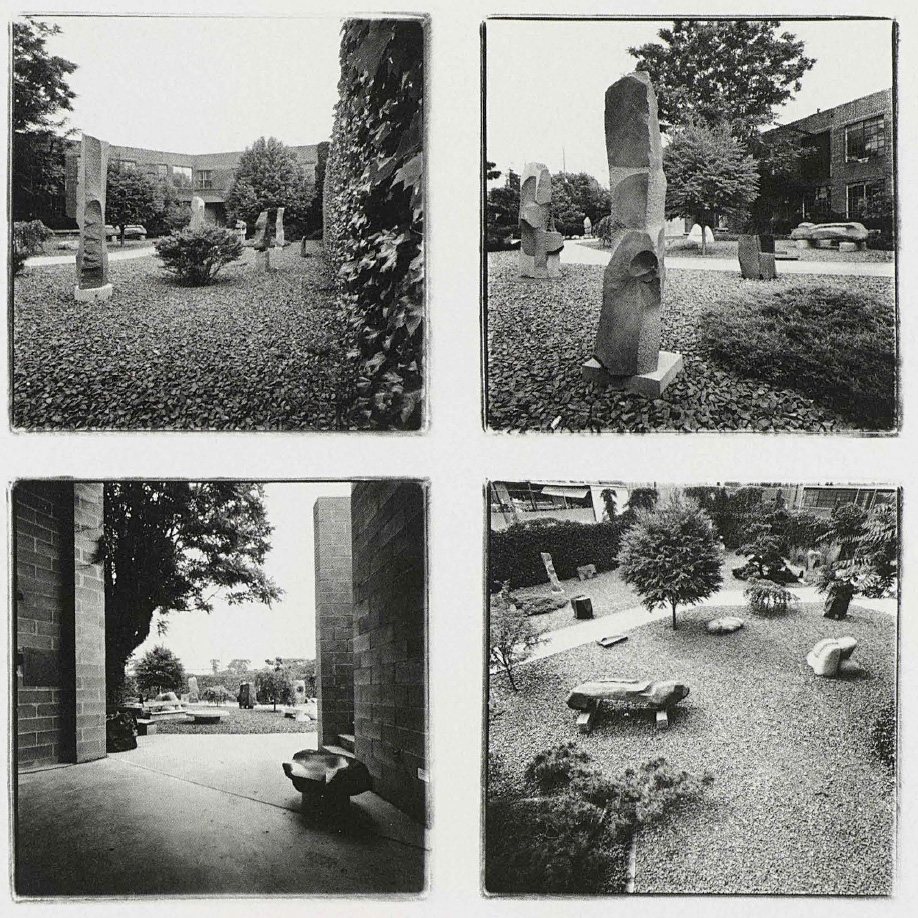








This article is adapted from Amy Hau’s “The Making of a Museum,” published in The Noguchi Museum | A Portrait (Phaidon, 2015).

